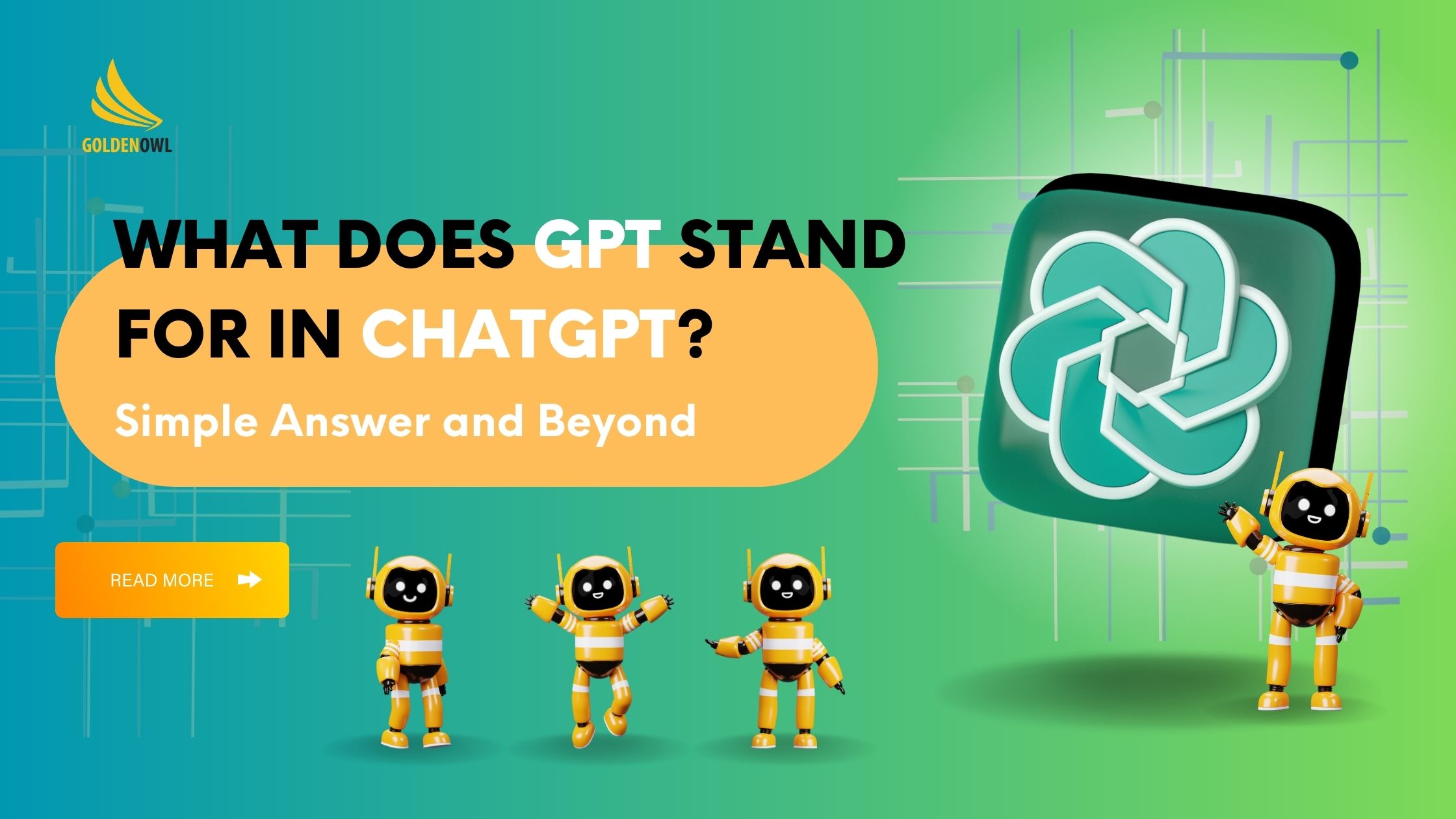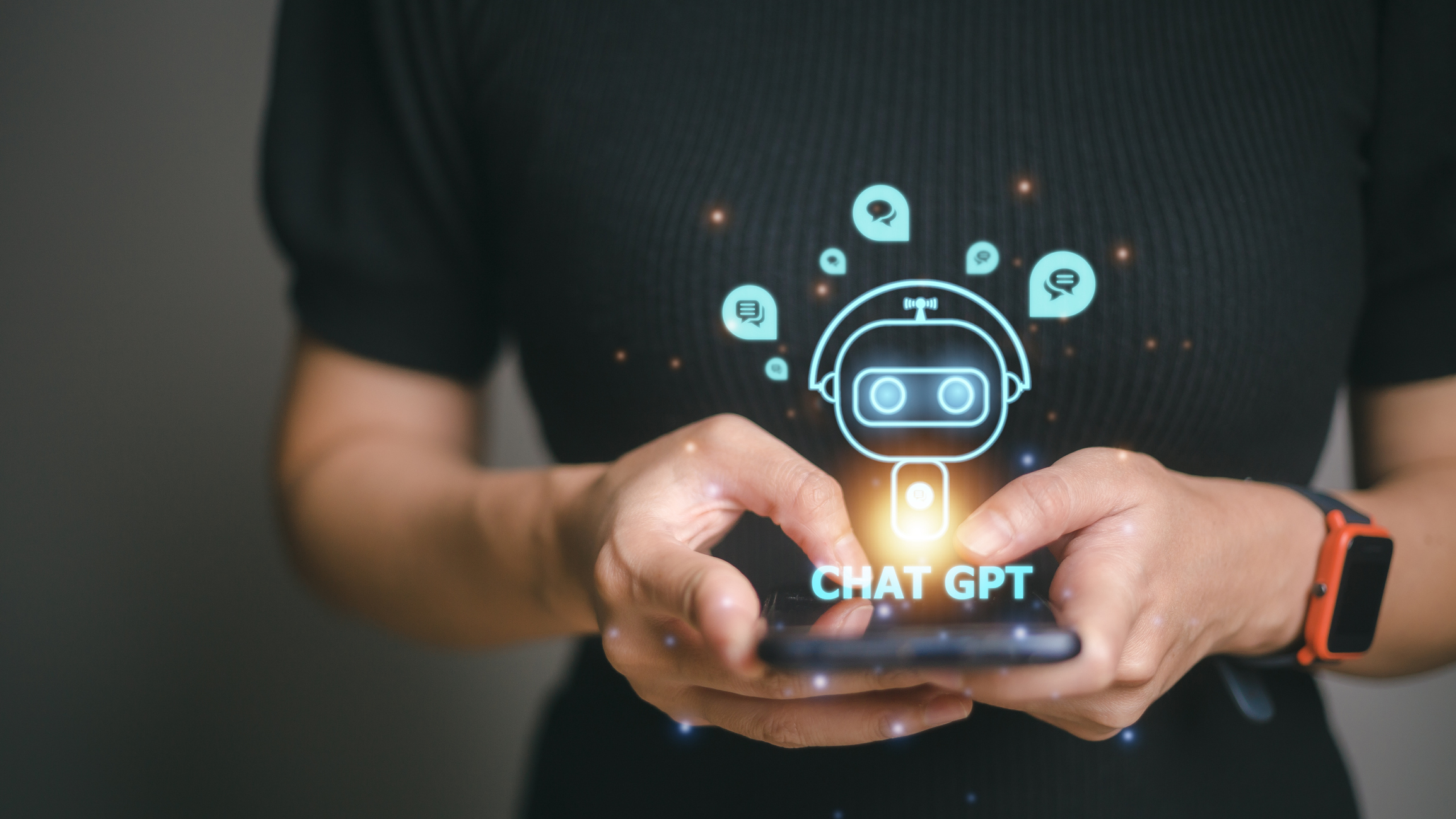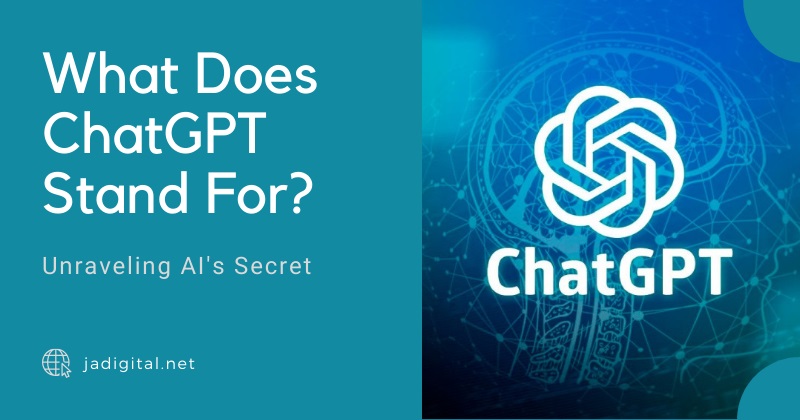ChatGPT stands for “Chat Generative Pre-trained Transformer.” It’s an advanced AI developed by OpenAI for conversational tasks.
ChatGPT uses deep learning to generate human-like text. It engages users in meaningful conversations. This AI model is pre-trained on diverse internet text. Its primary function is to assist and provide information. Businesses use ChatGPT for customer support and virtual assistance.
It can answer questions, provide recommendations, and even engage in small talk. Its versatility makes it valuable in many applications. ChatGPT evolves continually, improving its responses. It offers a seamless user experience. This technology represents a significant leap in AI-driven communication.

Quick Navigation
Introduction To ChatGPT
ChatGPT is an AI model developed by OpenAI. It stands for Chat Generative Pre-trained Transformer. This model can understand and generate human-like text. It’s used in various applications like chatbots, content creation, and more.
Origins Of ChatGPT
ChatGPT comes from OpenAI’s GPT series. The GPT stands for Generative Pre-trained Transformer. The first version, GPT-1, was released in 2018. This model used vast data from the internet to learn language patterns. It was followed by GPT-2, which was more powerful. GPT-3, the latest, is even more advanced.
| Version | Release Year | Main Improvement |
|---|---|---|
| GPT-1 | 2018 | Basic language understanding |
| GPT-2 | 2019 | Better text generation |
| GPT-3 | 2020 | Advanced capabilities |
Purpose And Goals
The main purpose of ChatGPT is to assist with human-like text generation. It helps in various fields. For example:
- Customer support – Chatbots can resolve queries quickly.
- Content creation – Writers can get inspiration and assistance.
- Education – Students can get instant answers to questions.
The goal is to make AI more useful and accessible. It aims to improve communication and efficiency in daily tasks.

Breakdown Of ChatGPT
Understanding the term “ChatGPT” starts with breaking down what “GPT” stands for. GPT is an acronym that holds significant importance in the world of AI and machine learning. Let’s delve into the components that make up GPT.
Generative Pre-training
The first part of GPT stands for Generative Pre-training. This means the model is trained on vast amounts of text data before it can generate coherent text. This pre-training allows the model to understand various language patterns, syntax, and semantics.
Think of it as teaching a child to read and understand books before asking them to write a story. The pre-training phase is crucial for the model’s ability to produce meaningful and contextually accurate text.
Transformers In AI
The second part of GPT involves Transformers, a type of neural network architecture. Transformers are designed to handle sequential data, making them perfect for tasks involving text. They use a mechanism called attention to weigh the importance of different words in a sentence.
Transformers have revolutionized the field of natural language processing (NLP). They allow models to understand context more effectively compared to older models like RNNs (Recurrent Neural Networks). This makes them the backbone of advanced AI applications, including ChatGPT.
Here is a simple table to summarize the Breakdown of GPT:
| Component | Description |
|---|---|
| Generative | Ability to create text |
| Pre-training | Initial training on large text data |
| Transformers | AI architecture for understanding language |
How ChatGPT Works
Understanding how ChatGPT works can be fascinating. This AI language model powers many applications. It helps with writing, coding, and answering questions. Let’s dive deeper into its workings.
Training Process
ChatGPT uses a complex training process. Initially, it learns from a massive amount of text data. This data comes from books, websites, and articles. The model reads and understands patterns in this data. It learns grammar, facts, and some reasoning abilities.
During training, the model looks at billions of sentences. It tries to predict the next word in a sentence. Over time, it gets better at this task. The result is a powerful language model that can generate human-like text.
Fine-tuning Techniques
After the initial training, fine-tuning techniques improve the model. Fine-tuning uses specific datasets to adjust the model. This step ensures the model performs well in particular tasks.
Fine-tuning can involve different methods. One method is supervised fine-tuning. Here, the model learns from examples with correct answers. Another method is reinforcement learning. This method uses feedback to help the model improve its responses.
Fine-tuning makes the model more reliable and accurate. It also helps the model understand the context better. This is crucial for generating meaningful and relevant responses.
Applications Of ChatGPT
ChatGPT, developed by OpenAI, has numerous applications in various fields. Its ability to generate human-like text makes it valuable in many scenarios. Let’s explore some real-world uses and future potential of ChatGPT.
Real-world Uses
ChatGPT is transforming industries with its versatile applications. Below are some significant real-world uses:
- Customer Support: ChatGPT can handle customer queries efficiently. It provides quick responses and resolves common issues.
- Content Creation: Writers use ChatGPT to generate blog posts, articles, and creative content. It helps in brainstorming and drafting ideas.
- Language Translation: ChatGPT aids in translating text between different languages. This supports global communication.
- Education: Educators use ChatGPT to create interactive learning experiences. It assists in answering student questions and explaining concepts.
- Healthcare: Medical professionals use ChatGPT for initial patient consultations. It helps in gathering patient information and providing preliminary advice.
Future Potential
The potential of ChatGPT is vast and promising. Here are some exciting future possibilities:
- Advanced Personal Assistants: ChatGPT could become more intuitive. It might understand and predict user needs better.
- Enhanced Creativity Tools: ChatGPT could assist artists and writers in more sophisticated ways. It might help in creating complex narratives and artworks.
- Improved Healthcare Support: ChatGPT could provide more accurate medical advice. It might integrate with health monitoring devices for real-time analysis.
- Smart Home Integration: ChatGPT could seamlessly integrate with smart home devices. It might control home environments based on user preferences.
- Educational Tutors: ChatGPT could offer personalized learning experiences. It might adapt to individual learning styles and needs.
In summary, the applications of ChatGPT are diverse and expanding. Its real-world uses and future potential hold great promise.
Ethical Considerations
ChatGPT, an advanced AI language model, offers numerous benefits. Yet, ethical considerations remain crucial. This section explores key issues: bias, fairness, and privacy concerns.
Bias And Fairness
AI models can sometimes show bias. ChatGPT learns from large datasets. These datasets might contain biases. Therefore, ChatGPT might produce biased responses. Ensuring fairness is vital. Developers must continually check for biases. They should update and improve the AI model.
Here is an example of biases in AI:
| Bias Type | Description |
|---|---|
| Gender Bias | Preferring one gender over another. |
| Racial Bias | Favoring certain races or ethnicities. |
| Age Bias | Discriminating against age groups. |
Developers strive to make ChatGPT fair. They use various techniques to minimize biases. Continuous monitoring and updates are essential.
Privacy Concerns
Privacy is another critical issue. Users share personal information with ChatGPT. This can include sensitive details. Protecting user privacy is a top priority.
Here are some privacy concerns:
- Data Collection: What data does ChatGPT collect?
- Data Storage: How long is the data stored?
- Data Access: Who can access the data?
Developers must follow strict privacy policies. They should ensure data encryption. Limiting data access is also important. Regular audits help maintain privacy standards. Users should feel safe using ChatGPT.

Frequently Asked Questions
What Does ChatGPT Stand For?
ChatGPT stands for “Chat Generative Pre-trained Transformer”.
Who Developed ChatGPT?
OpenAI developed ChatGPT.
Is ChatGPT A Chatbot?
Yes, ChatGPT is an advanced AI chatbot.
How Does ChatGPT Work?
ChatGPT uses machine learning to generate human-like text.
Can ChatGPT Understand Multiple Languages?
Yes, ChatGPT can understand and generate text in multiple languages.
What Are The Uses Of ChatGPT?
ChatGPT is used for customer support, content creation, and more.
Conclusion
Understanding what ChatGPT stands for offers valuable insights into AI’s capabilities. This tool aids in generating human-like text. Its potential spans various applications, enhancing productivity and creativity. Embrace ChatGPT to leverage its advanced features for your tasks. Stay updated with AI advancements to maximize benefits.
Last Updated on November 26, 2024 by JADigital Editorial
